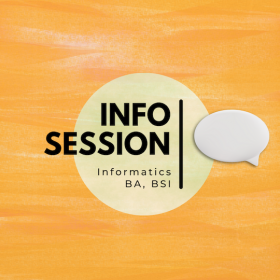
Join our session to learn about the Informatics Major!
Informatics students learn the skills and knowledge required to collect, manage, and analyze data and information, and prepare for the great ethical responsibility that comes with these societally transformative roles.
Students develop an understanding of the complex social, cultural, and ethical context related to communicating with digital and social media tools, and to apply this understanding to creating digital solutions and technologies that are effective, inclusive, and responsive to the needs, values, and perspectives of people with many different lived experiences.
In this session, the iSchool Undergraduate Student Services staff shares more about the Bachelor of Science and Bachelor of Arts major in Informatics.

